Adani Group enters new sectors
The Adani Group is seeing new ports of call, as diverse as green energy and defence, while retaining its hold on its core business
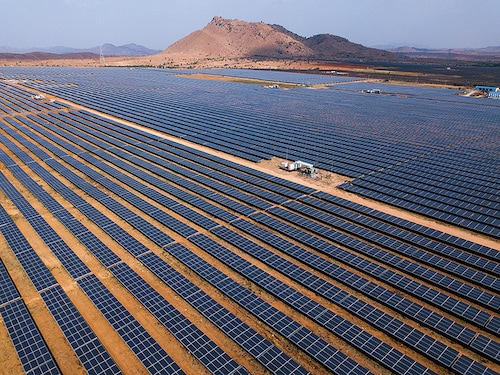

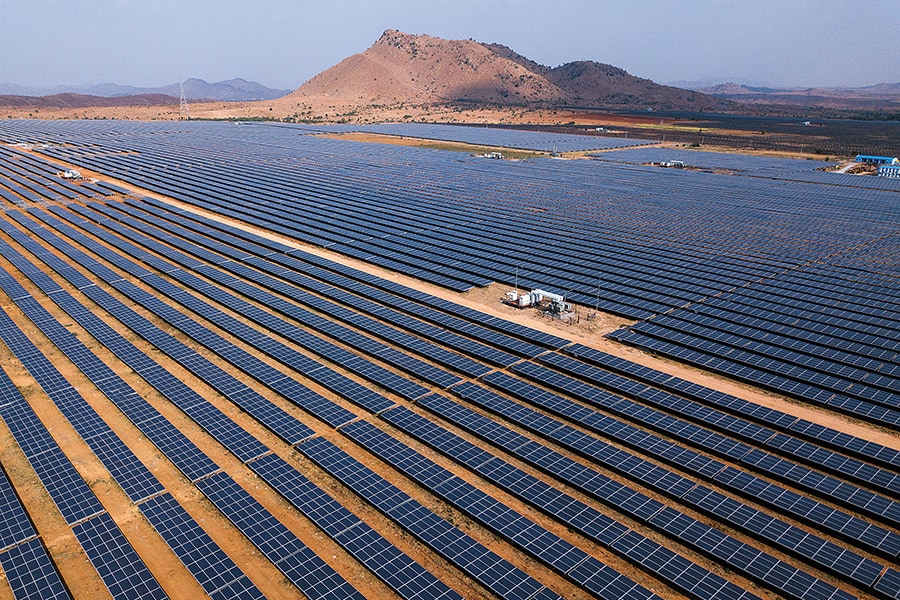 Over the next five years, Adani Group has lined up investments of ₹112,000 crore to transform the company into the world’s largest renewable energy firm by 2030
Over the next five years, Adani Group has lined up investments of ₹112,000 crore to transform the company into the world’s largest renewable energy firm by 2030
Image: Courtesy Adani Group[br] For long, Gautam Adani has been synonymous with ports, coal, power and infrastructure.
Along with a value of $30 billion, his companies have, however, amassed serious brickbats over their poor environmental track record, particularly the flagship company Adani Ports and Special Economic Zone (APSEZ), in Gujarat, and Adani Australia, over the controversial Carmichael coal mine in Australia.
But this could well change, with the 58-year-old billionaire emerging as an unlikely champion of clean energy. Over the past few years, he has been laying the groundwork to diversify his empire, and renewable energy seems to be at the heart of this transformation.
In June, Adani Group’s renewable energy arm, the Adani Green Energy Limited (AGEL), won a contract from the Solar Energy Corporation of India (SECI) to develop 8 GW of solar projects, along with a commitment to build 2 GW of additional solar cell and module manufacturing capacity over the next five years. The entire project is expected to cost ₹45,000 crore, and will create about 4 lakh direct and indirect jobs.
With this, AGEL will have about 15 GW of capacity of renewable energy under operation. “By 2025, the capacity of AGEL will be 25 GW, while Adani Power’s thermal capacity will be less than 20 GW,” says Adani, chairman of Adani Group. Today, Adani Power’s thermal capacity stands at 14 GW.
AGEL, set up in 2015, has become the group’s second-most valuable company in terms of market capitalisation, at ₹54,000 crore, a notch below APSEZ. In fact, in June, it had become the group’s most valuable company as its share prices swelled over the past two years, AGEL shares have rallied as much as 1,000 percent on the bourses.
Over the next five years, Adani has lined up investments of ₹112,000 crore to transform the company into the world’s largest renewable energy firm by 2030. “India will have between 20 percent and 25 percent penetration in renewables by 2030,” he says. “I feel that renewable penetration will continue to grow because it offers clean, economical energy solutions. Technology has changed the world dramatically and also helped in climate change adaptation.” While there is an undeniable business opportunity in the green energy gamble, it is also a shot in the arm for the group, particularly when it comes to addressing years of allegations over its poor environmental record.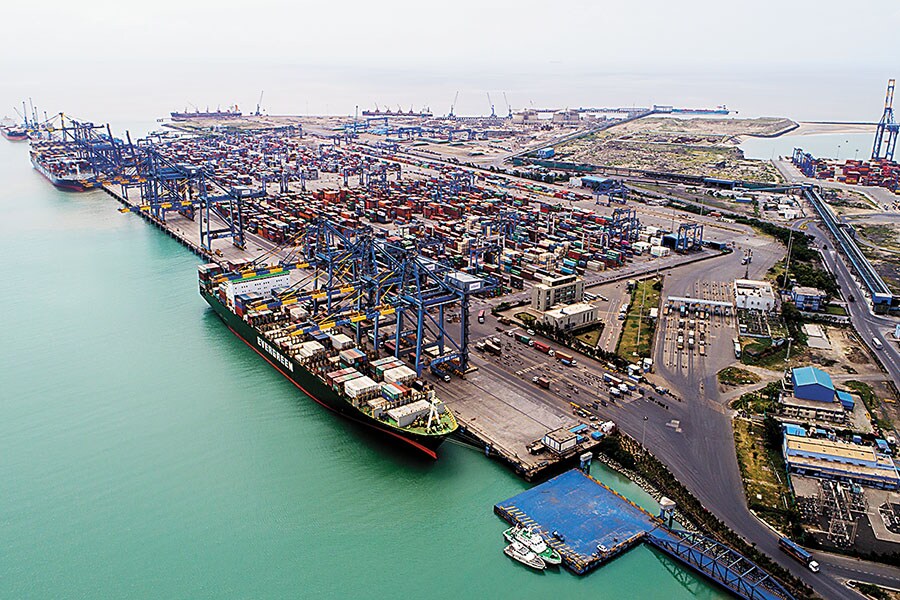 The Adani port in Gujarat[br]Yet, green energy is only one leg of the group’s transformation and diversification. Over the past few years, Adani has ventured into numerous new areas, including defence, airports, metro rails, data storage and petrochemicals. “The foundation of Adani Group is built on strategically meeting India’s needs and requirements, addressing some of the cornerstones in India’s growth ladder,” says the group’s spokesperson.
The Adani port in Gujarat[br]Yet, green energy is only one leg of the group’s transformation and diversification. Over the past few years, Adani has ventured into numerous new areas, including defence, airports, metro rails, data storage and petrochemicals. “The foundation of Adani Group is built on strategically meeting India’s needs and requirements, addressing some of the cornerstones in India’s growth ladder,” says the group’s spokesperson.
Green Frontiers
“As a group, they are always willing to take two steps forward, and step back and reflect if the need arises,” says G Raghuram, director, IIM-Bangalore, and member of the board of directors at APSEZ. “As far as diversification goes, it is simply one of competence and with the bandwidth to handle it. Gautam has a good nose for business. He has also built good managerial competence and professional management that can complement his entrepreneurial skills.”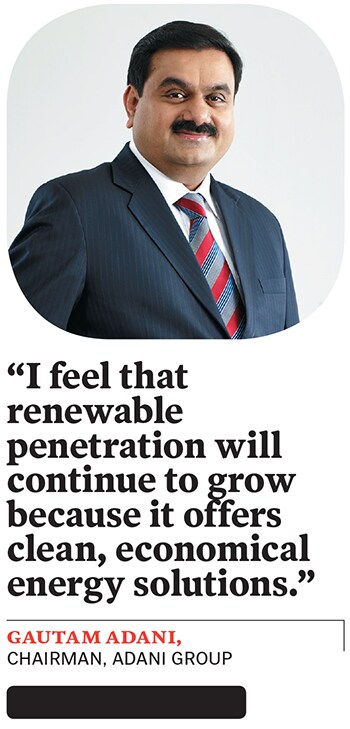 Headquartered in Ahmedabad, AGEL has an installed capacity of under 3 GW across 11 states. It owns and operates utility-scale grid-connected solar power, wind power, hybrid projects and solar parks, and has an order book in excess of 10 GW. Solar power accounts for 76 percent of the portfolio, while wind power and hybrid projects account for 12 percent each.
Headquartered in Ahmedabad, AGEL has an installed capacity of under 3 GW across 11 states. It owns and operates utility-scale grid-connected solar power, wind power, hybrid projects and solar parks, and has an order book in excess of 10 GW. Solar power accounts for 76 percent of the portfolio, while wind power and hybrid projects account for 12 percent each.
“Today, if you are to set up a coal-based power plant compared to a solar and wind-based one, it makes more sense to go after renewables,” says Chandra Bhushan, environmentalist and CEO of New Delhi-based think tank iForest. “Under Indian laws, renewables have the first right over the [power] grid, and unlike coal, where it makes sense to have a power purchasing agreement, the government has to buy the [renewable energy] power. In many ways, Adani’s foray into renewables, especially the latest project, signals that the sector has finally arrived.”
India, a signatory to the 2015 Paris Agreement on climate change mitigation, has been trying to ramp up its use of solar power, especially since it committed to ensuring that 40 percent of its power capacity would be from non-fossil fuel sources. Prime Minister Narendra Modi also launched in 2015 the International Solar Alliance, a treaty between 121 countries, to work towards promoting solar energy. India’s solar power capacity has grown more than 11 times in the last five years, from 2.6 GW in 2014 to 35 GW in 2020. India’s total installed power capacity is about 371 GW as of June. Renewable energy, which includes small hydro power and solar power, accounts for 87 GW, and thermal power accounts for 231 GW.
“When we are talking about only climate change and not giving economical solutions, things will never work,” Adani says. “The cost of renewable energy was about five times higher than today five to seven years ago. But the reduction in price has seen wide acceptance. People want development at an affordable price. The challenge is to continue development and make things good for the society. Economically viable solutions driven by improving technology will make climate change adaptation faster.”
It also helps that it takes far less time to set up renewable power sources, compared to coal-based power plants. “It takes six months to set up a solar power plant, while it takes four to five years for a coal-based plant. The cost advantage is phenomenal,” adds Bhushan of iForest. “Now, there is a lot of venture capital money involved in green energy, and India has massive potential for solar power, much more than wind. Therefore it is also a case of business acumen.”
Adani Group is also firming up plans to raise up to $12 billion through sale of green bonds over the next four to five years. If it goes through, it will be the country’s largest sale of green paper. There seems to be good merit in that: Over the past year, AGEL has seen a 292 percent growth in its revenues, while net profits rose to ₹134.26 crore in 2020 from a loss of ₹35 crore in 2019.
“Normally all our projects are 70:30 or 75:25 debt-equity ratio,” the company spokesperson explains. “AGEL has the distinction of being the only renewable company outside the OECD that has garnered sovereign rating. This gives us the leverage to raise a 25-year bond, which significantly cuts the requirement of refinancing during the project execution, and ensures timely completion of the project.”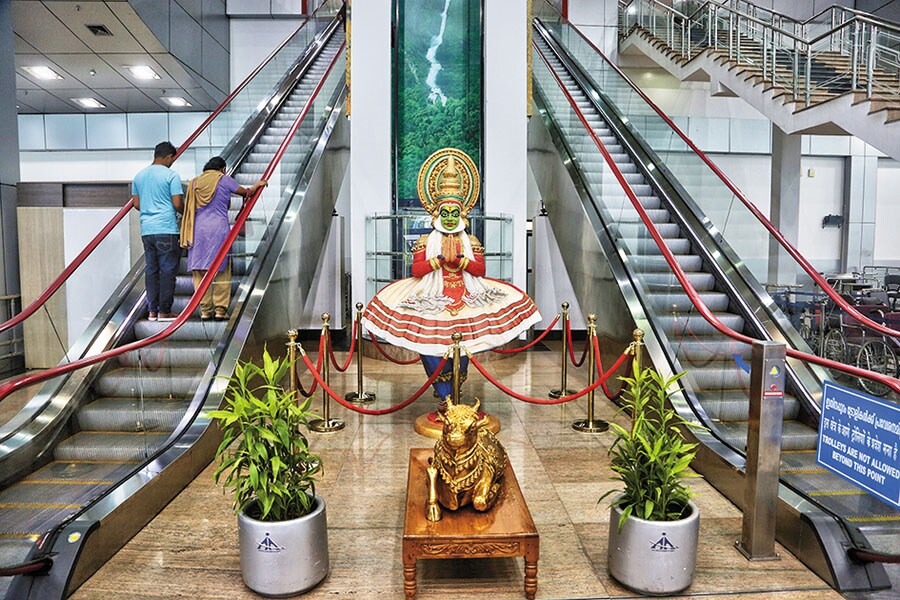 The Adani Group has bagged the rights to run six government-run airports
The Adani Group has bagged the rights to run six government-run airports
Image: Getty Images[br]Waiting for Take off
Adani Group has also been busy expanding into areas such as airports, defence and data centres.
Last year, it bagged the rights to run six government-run airports, making it India’s third-largest private airport operator in passenger volume after the GMR Group and GVK group. Under the contracts, Adani Group is to develop and operate airports at Jaipur, Ahmedabad, Lucknow, Mangaluru, Guwahati and Thiruvananthapuram, through a 50-year public-private-partnership with the Airports Authority of India (AAI). It also signed concession agreements for three of them this February, with plans to take over their operations within 180 days.
ICRA, a credit rating agency, reckoned that the group could earn over ₹650 crore in the first year, after paying its share to the AAI. At that time, the six airports together handled 30 million passengers, growing over 22 percent over the previous year. However, for now, those plans seem to have hit a glitch. In June, Adani Group asked the ministry of civil aviation for an extension in taking over the three airports, and was given time till November.
Industry experts say it is a deliberate attempt at staying away from taking over the airports, largely due to the aggressive rates that it offered to the AAI. “None of their bids ever made any sense,” says an industry executive. For instance, at ₹115 per passenger for Manguluru and ₹171 for Lucknow, Adani Group’s bids were over 500 percent more than the lowest bids received from the GMR Group and PNC Infratech. Similarly, Adani Group bid ₹177 for Ahmedabad airport, nearly 200 percent more than the lowest bid of ₹60 from Autostrade Indian Infrastructure Development Pvt Ltd. “It’s ridiculous, and clearly the move now seems deliberate to realign their bids.”
The group is also in the midst of a legal tussle with the GVK group, which runs the Mumbai airport, for purchasing a 13.5 percent stake held by South Africa-based Bidvest. “Considering the slowdown, the Adani Group may not look at airports immediately and might wait out until 2023-24 before recovery and a fresh round of financing,” says Mark Martin, founder of Dubai-based aviation consultancy Martin Consulting. “They are a formidable group and have the intent. Instead of going after low hanging fruits such as the Mumbai airport, they should look at the Delhi airport, which has much to offer, especially in the real estate space.”
Then there is a tie-up with aircraft maker Airbus for collaboration in the area of aircraft services for the Indian and South Asian markets. “With Adani’s recent foray into airports, this potential collaboration will leverage the synergies between the product and services excellence of Airbus and infrastructure, engineering and mega-project execution capabilities of Adani,” Airbus said while announcing the partnership in February.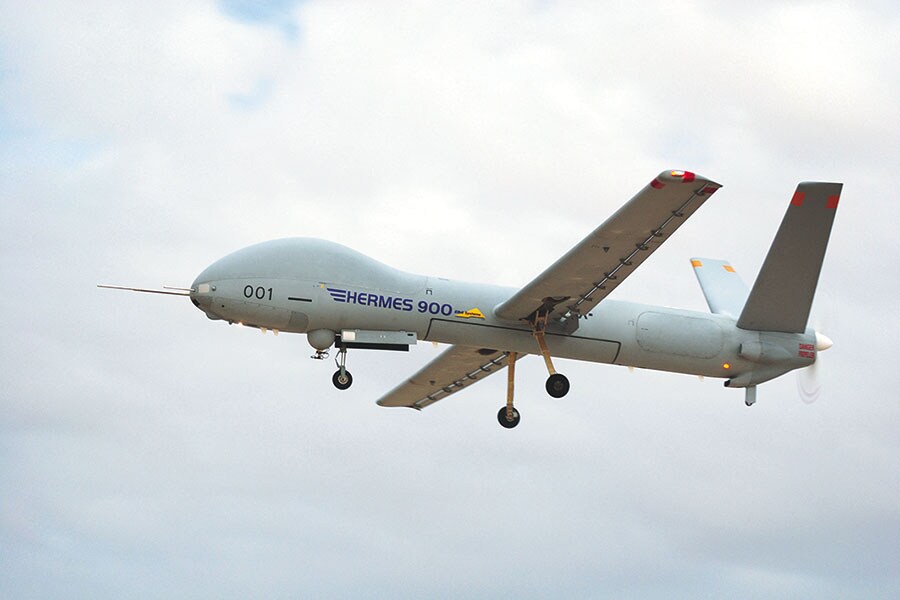 It also has a tie-up with aircraft maker Airbus win the area of aircraft services[br]Defence & Data
It also has a tie-up with aircraft maker Airbus win the area of aircraft services[br]Defence & Data
Adani Group has also doubled its efforts in the lucrative defence sector, which has received an impetus under the Modi government it is in the midst of a $250-billion modernisation plan.
In April 2019, the company acquired Bengaluru-based Alpha Design Technologies, which specialises in design, development, and manufacture of defence electronics and avionics. It also stitched a partnership with Swedish defence and aerospace company Saab to design, develop and produce the Gripen fighter aircraft for India. This February, Adani Group’s joint venture partnership with Israel-based Elbit Systems exported the first-ever India-made military drone to an undisclosed customer. This partnership includes the design, development and maintenance of Hermes 900 and Hermes 450 unmanned aircraft systems in India.
Adani Group has also forayed into the small arms business by acquiring a facility owned by Punj Llyod in Gwalior late last year to produce machine guns, carbines, and other weapons for India and export markets.
“Today, Gautam delegates far more than before,” adds Raghuram. “He finds value in professional management, and they also have a role in fitting newer opportunities into the overall institutional growth. But, at the same time, Gautam is in a position to absorb all the risks.”This enables Adani to venture into entirely new areas, such as data centres. As India’s internet users surge alongside smartphone subscribers, Adani Group has sensed the opportunity in setting up centres that collect, store, process, and distribute data. As a part of its initial plan, it is building data centres in Delhi, Mumbai, Chennai and Hyderabad. Last year, the group said it would invest up to ₹70,000 crore to set up solar-powered data parks in Andhra Pradesh.
“India offers a huge market when it comes to data centres,” says Prachir Singh, senior research analyst, Counterpoint Research. “The earning potential is massive, and companies such as Facebook, Amazon and Google are all entering the data centre market in India. With the new data privacy law, companies will need to store certain data in India and data centres require a lot of real estate and energy. The Adanis have the expertise there, and it could emerge as a good money churner.” The India data centre market is expected to be worth $4 billion by 2024, according to Research and Markets, an Ireland-based market research firm.
Safe Harbour
Yet, despite its diversification, the Adani Group isn’t forgetting its mainstay, the ports business.
Gautam Adani had set up Adani Port in Gujarat after bagging the rights in 1994 from the Gujarat Maritime Board for setting up a captive jetty at Mundra, then a fledgling town in Gujarat. In 1998, Gujarat Adani Port, a joint sector company promoted by Adani Port and Gujarat Port Infrastructure Development Company, was incorporated in 2003, Adani Port merged with Gujarat Adani Port.
Since then, Adani Group has emerged as India’s largest private port operator, and operates 11 ports and terminals across Gujarat, Odisha, Goa, Andhra Pradesh, Tamil Nadu and Kerala it accounts for about 22 percent of the country’s total port capacity, and handles over 200 million tonnes of cargo a year. “Unlike the major ports controlled by the government, they can take quick decisions and have always been customer-oriented,” adds Raghuram.
Earlier this year, the group also bought a 75 percent stake in Krishnapatnam Port in Andhra Pradesh for an enterprise value of ₹13,572 crore, helping it improve its market share to nearly 27 percent. It also purchased Odisha’s Dhamra Port in 2014 and Tamil Nadu’s Kattupalli Port in 2016.
“We believe our actions will allow us to emerge stronger on the other side of the Covid-19 crisis and put us comfortably on the path to achieve 400 million tonnes of cargo by FY25, and thereby make progress towards becoming one of the most valuable port companies in the world by the end of the next decade,” says Karan Adani, CEO of APSEZ. “Our objective has always been to avoid focusing on numbers, and focus on the strategy and execution that generates the numbers. In this context, the two areas that we continue to focus on are the logistics and industrial economic zone strategy.”
Clearly, the Adani juggernaut is only starting out.
First Published: Jul 30, 2020, 09:36
Subscribe Now